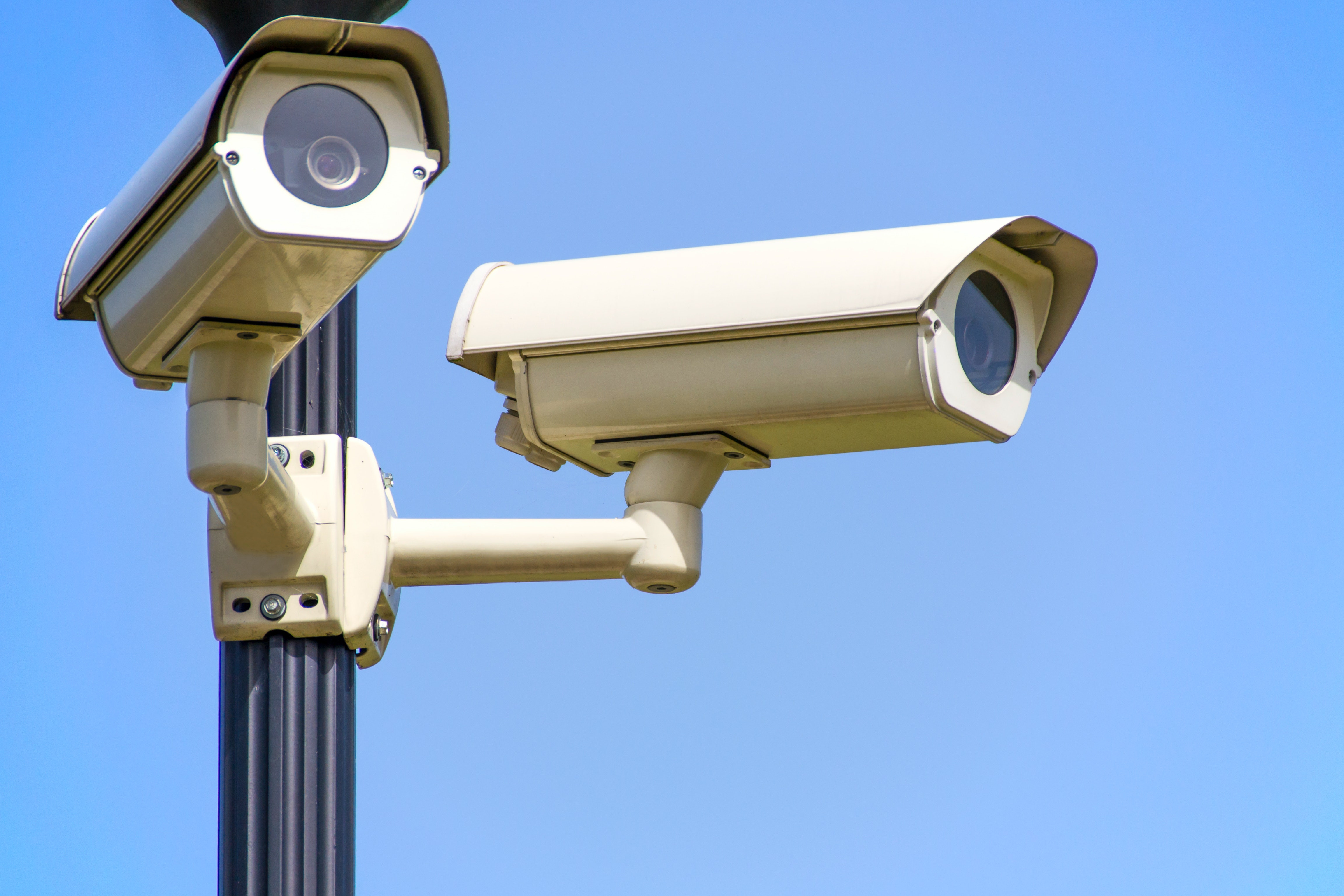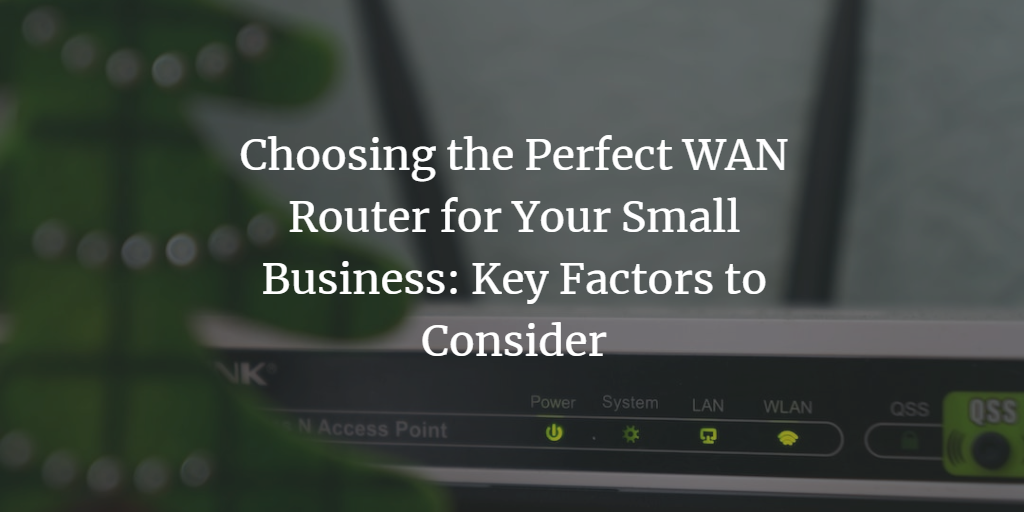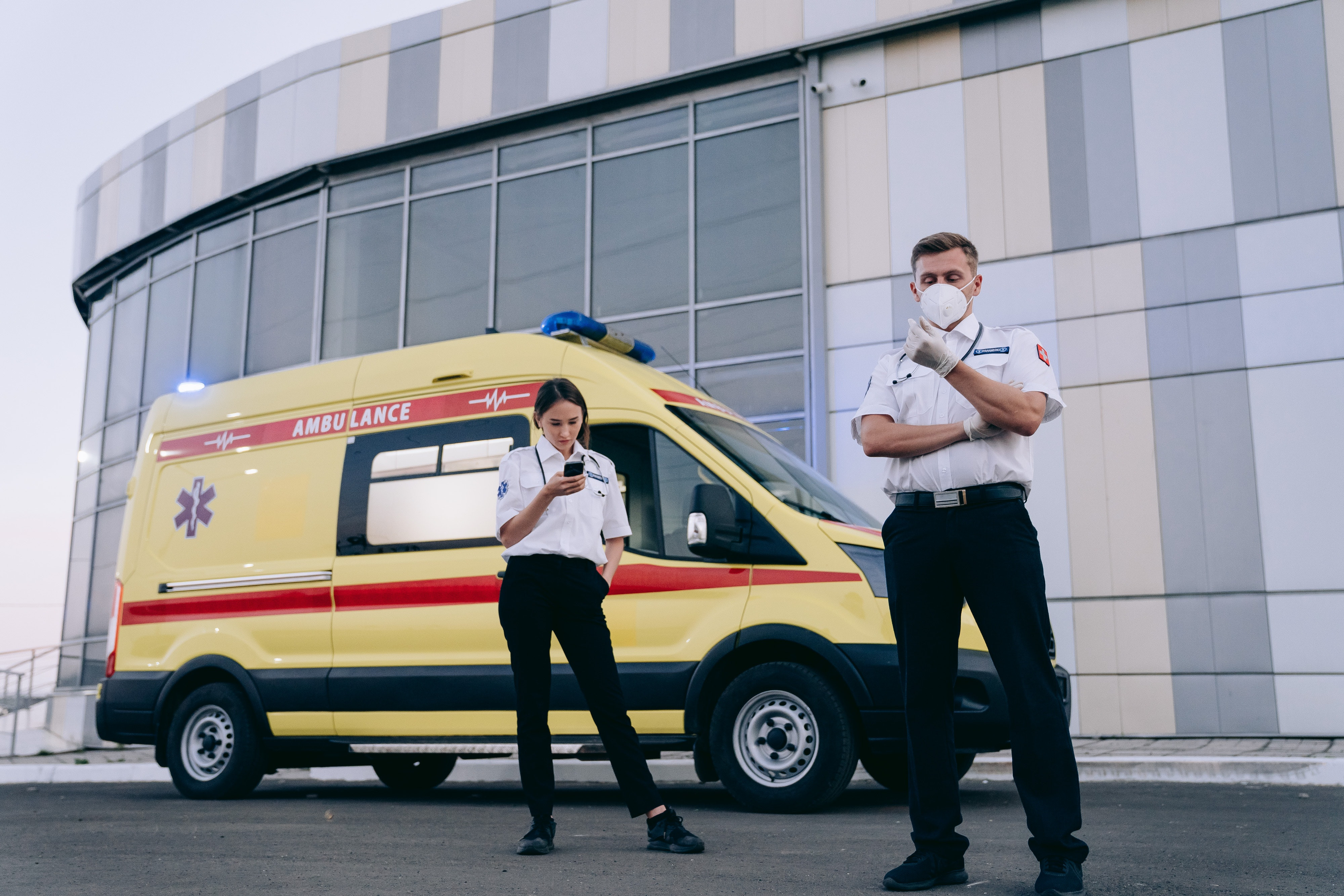Are you looking to install security cameras in your place of business? If so, then you will want to read our comprehensive guide to understand how surveillance cameras are priced and the ways in which the price can fluctuate.
Keeping your property safe and secure is of utmost importance to many businesses. Security cameras become important tools when a crime occurs. Surveillance cameras can help identify suspects; they also act as great tools for crime prevention.
When looking to purchase security cameras, it is best to know the price differences between the type of cameras, what the cameras can do, price of installation, and prices for data storage. Read through our guide to gain insight into all of this important information.
Average Cost for the Different Security Camera Types:
There are nine types of security cameras, each with a unique feature. Read below to see the average price per camera for each type. It is best to have a budget in mind when looking at each camera. To learn more specifics about the features of each surveillance camera, continue on to the next section.
- Box camera
- Can interchange lenses to suit the security situation
- $100-500
- Dome camera
- Named after the physical dome design. Made to withstand all-natural elements inside and outside (rain, dust, high-light, low-light)
- 80-350
- PTZ camera
- Pan-tilt-zoom. They are able to swivel left and right, tilt up and down, and zoom in and out
- 100-300
- IP camera
- Internet protocol. A digital camera that sends footage using an IP network
- 60-300
- Bullet camera
- Named after the cylindrical shape. Most commonly recognized security camera shapes so they are a visible deterrent. They are also usable indoors and outdoors
- 30-250
- Day/night camera
- Can automatically adjust in different light surveillance conditions
- 100+
- Thermal (FLIR) camera
- Can detect heat from objects—living or not
- 65+
- Wireless camera
- The video signal and footage can transmit over the internet
- 100+
- Wide dynamic range camera
- WDR. The camera can fix or compensate for images in footage where there are dark and bright areas
- $160+
Features of the types of cameras:
Each type of surveillance camera has a feature that may be perfect for your business situation. Are you looking for a camera that can record at night? What about a camera that can be controlled remotely from your phone? Are you worried about bad lighting? If so, maybe think about a thermal camera.
Read the sections below to gain a better understanding of the features of each type of security camera.
Cameras that have an intentional physical design:
The box camera is a classic surveillance tool. It is a versatile piece of technology because the user can select and change the type of lens on the camera. This allows users to move the camera into different situations and choose the appropriate lens to ensure they get the best footage possible.
In addition to changing the lens, box cameras can also be altered to be used as outdoor cameras. Buyers can find them already outfitted with weatherproofing or they can add it after purchase.
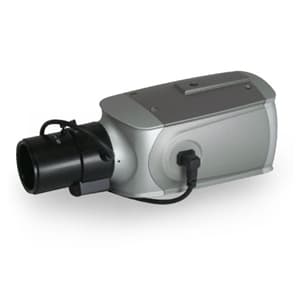
For instance, you may purchase a box camera intending to use it inside but then realize you prefer having surveillance outside. In this situation you will not need to buy a whole new camera and system, you simply need to add weatherproofing.
Another great feature box cameras have is the ability to record in analog CCTV. This is a secure video format that is accessible by most platforms. The box camera is a great option for those beginning to think about surveillance but is unsure of where exactly they want to place the camera.
Named after the unique shape, the dome camera is a sleek surveillance option for high-profile and large venues.
The dome camera can blend in due to its rounded shape. Moreover, the camera lens is disguised by the shape making it nearly impossible for people to tell which direction the camera lens is pointing.
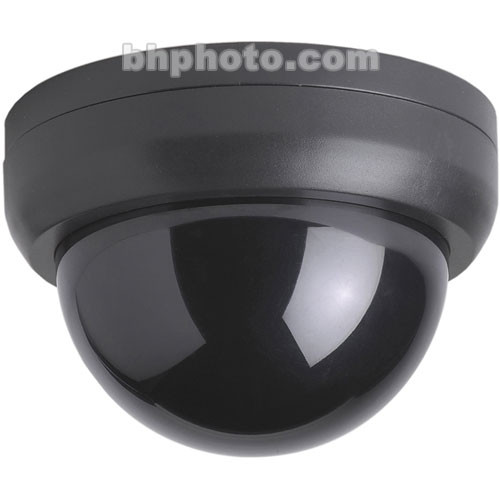
Photo from: https://www.bhphotovideo.com/c/product/363626-REG/Lorex_SG620_SG620_Simulated_Dome_Style_Security.html
Users of the camera are able to select the video format that works the best for them (analog, CCTV, HD, etc.). Another custom feature for the dome camera is it can be “vanda-proof”. This customization means it will be challenging to break or stop from recording.
The dome camera is a good choice for businesses that are adding security to their warehouses or factories that may be at risk for vandals.
The bullet camera is the classic surveillance camera shape; this is the camera shape that shoppers and visitors recognize immediately. Named after the cylindrical shape, the bullet camera is also sometimes referred to as the lipstick camera.
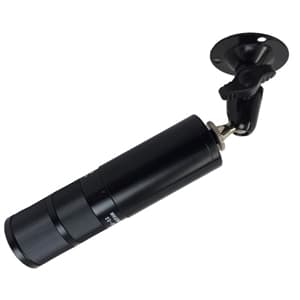
Photo from: https://www.cctvcamerapros.com/HD-Bullet-Security-Camera-p/hd-bl8.htm
This type of camera mounts to ceilings and walls and tends to be smaller in size. It is less intrusive making it a good option for any establishment. On the other hand, it can come in an infrared version which tends to be larger.
The bullet camera can also be weatherproofed to use outdoors and users can select the video format. Due to its recognizable shape, the bullet camera will be a great deterrent for any manufacturer or warehouse looking for security.
The PTZ camera is a great option for surveillance. PTZ stands for pan, tilt, zoom; this camera can literally do it all. With a rotating lens that is directional and can zoom, the PTZ is great for large facilities.
A PTZ camera can be accessed remotely or from a phone. This is a convenient feature for large business owners who may need to confirm what is going on at their place of business without being able to physically get there. Moreover, the PTZ can record sound. This is the perfect camera for capturing large areas.
Cameras that are connected to the internet:
The IP camera is a great option for those who are looking for fewer wires and cables. An IP camera tends to connect like a two-way radio. It can be accessed and controlled remotely. Moreover, it is powered over ethernet, allowing for less wires.
Lastly, the IP camera has better resolution; it has 4X better quality compared to a typical CCTV. The higher resolution and remote control are great for a business owner with a large warehouse or facility that needs monitoring.
A wireless camera is the typical internet connection surveillance choice. It is powered by wireless technology and allows for scheduled recordings.
This camera has some unique features like auto cloud storage and motion detection. The auto cloud storage ensures that your video footage is not taking up physical storage and that it is secured and backed up.
Motion detection is a particularly great feature because your camera battery will last longer because it may not always be recording when it does need to. Overall a wireless surveillance camera is optimal for large business owners because of the streamlined features like cloud storage, motion detection, and remote access.
Cameras that handle special lighting:
Thermal cameras are important for business owners who are looking for clear surveillance throughout all times of day for large spaces. Thermal cameras can detect issues or people from a greater distance than typical cameras because thermal energy travels faster than visible light.
This type of surveillance camera can detect images at any time of the day or night, during rain, and in light fog and smoke. It is highly accurate because it records images through heat instead of light.
Thermal cameras are useful if your warehouse or large building is in a place where the weather is a constant problem. Moreover, they can expose intruders wearing dark clothing. With thermal cameras you can almost always be guaranteed an image/video; however, it may be beneficial to pair with a regular HD camera to also have normal footage on hand.
Day/night cameras are great if you are planning on keeping surveillance on in your business during the day and night but you don’t want multiple types of cameras. This kind of camera allows for automatic adjustment with light.
Most of these cameras show color in daylight and grayscale in low light. Some of the higher-end models show color in low light; however, it costs more money. The difference between a day/night camera and a thermal camera is day/night cannot always detect people in dark clothing and fast movements in very low light.
WDR, which stands for wide dynamic range, is a fantastic option for business owners looking to set up surveillance in large warehouses, factories, etc. The wide dynamic range allows for the camera to get footage of large and wide areas.
Moreover, it improves quality under high-contrast lighting. This is accomplished with tone mapping. Tone mapping is a technique used in video or photography when an image is not showing up clearly. The camera uses image processing and computer graphics to map colors and create a series of overlays to show the areas in the image/video that are not showing up well.
A WDR camera is a good option if you want one camera that is shooting both inside and outside. The tone mapping will help work out any lighting issues that may occur when filming inside and outside.
How installation and maintenance of cameras impacts costs:
The average cost of a surveillance kit installation will typically start at around $1,500. However, this number will fluctuate lower or higher depending on the number of cameras you are looking to install for your business.
A wired camera tends to cost more for installation because it takes more time. The prices range between $150-$200 per camera installation. On the other hand, wireless camera installations are cheaper because they are less labor-intensive. These cost about $100 per camera to install.
Many cameras can be installed by yourself but most camera manufacturers suggest hiring workers to install them for you because it can be quicker and prevent any possible mistakes.
Cost of storing data footage:
- Arlo Secure:
- Storage: 30 days
- 1 Camera: $3/month
- 2 Cameras: $6/month
- 3 Cameras: $9/month
- 4 Cameras: $12/month
- 5 Cameras: $10/month
- Blink Basic
- Storage: 60 days
- 1 Camera: $2.50/month
- 2 Cameras: $5/month
- 3 Cameras: $7.50/month
- 4 Cameras: $10/month
- 5 Cameras: $12.50/month
- Nest Aware
- Storage: 30 days
- 1 Camera: $6/month
- 2 Cameras: $6/month
- 3 Cameras: $6/month
- 4 Cameras: $6/month
- 5 Cameras: $6/month
- Ring Basic
- Storage: 60 days
- 1 Camera: $2.50/month
- 2 Cameras: $5.00/month
- 3 Cameras: $7.50/month
- 4 Cameras: $10/month
- 5 Cameras: $12.50/month
- Wyze
- Storage: 14 days
- 1 Camera: $1.49/month
- 2 Cameras: $2.98/month
- 3 Cameras: $4.47/month
- 4 Cameras: $5.96/month
- 5 Cameras: $7.45/month
How to find a surveillance camera:
The above information can be overwhelming; however, we hope it was useful to gain an understanding of security cameras. To get further insight from industry professionals and hopefully purchase security cameras right for your business, visit the MCCR Business Directory HERE. We provide space for communications industry-specific businesses to advertise services and contact information.
If you are an owner of a critical communications-related business and are interested in signing up for the MCCR Business Directory, go HERE to choose your plan.
We understand in the critical communications community that security is a top priority for most businesses. This may come in the form of outdoor surveillance cameras to ensure your business’ surroundings are secure or it may be a camera inside to ensure your product is safe.
Choosing a surveillance plan that is cost-friendly for your budget and effective for your situation is also important. We hope this article helped provide the necessary information needed to choose the right security camera system for your business for the right cost.
